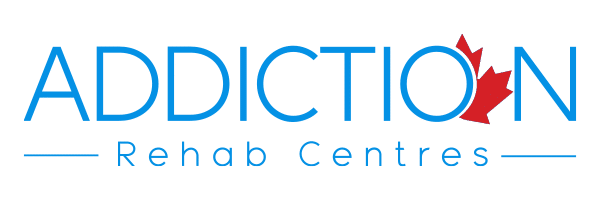Cognitive Behavioural Therapy
What is Cognitive Behavioural Therapy?
Cognitive behavioural therapy (CBT) is a type of psychotherapy that teaches patients to change their thought patterns and the way they react to situations or stress to establish healthier behaviour and a more positive lifestyle. CBT is intended to be a short-term therapy, typically in response to a specific problem an individual is facing. This cognitive response restructuring results in behavioural changes that can make a lasting impact on individuals battling drug addiction or anxiety disorders. CBT can be an effective treatment on its own or in combination with other therapies or anxiety-reducing medications.
How Does CBT Work?
During CBT sessions, a therapist (or counsellor, or psychoanalyst) analyzes the way the patient’s brain reacts to stress or stimuli and determines if the way in which the patient responds is negatively or positively affecting their actions. By examining these reaction patterns, the therapist can suggest alternate ways to frame the situation, so the patient’s brain is essentially re-trained on how to react to the stress. Through these newly learned behaviour patterns, the patient has better control of how they react to stress triggers, and can better manage symptoms of anxiety or depression (among others).
The process of CBT can be divided into the following steps:
-
Identifying the issue
What made the patient seek out therapy in the first place? The therapist will get background information on the circumstances that the patient is facing to help them understand the cause of the problem. The focus of CBT is not delving into the issue itself as you might expect from a clinical psychology session – but more so focusing on the solution.
-
Recognizing and naming your feelings
The therapist encourages the patient to examine their feelings around the issue, whether that be anger, sadness, frustration, etc. This can be a challenging step in CBT, as the patient may never have discussed the issue before, or really allowed themselves to think critically about it.
-
Identifying negative behaviours
Once the patient has identified their feelings and reaction patterns, the therapist helps guide them through the process of identifying if their reactions (and subsequent behaviours) are negative or positive. Often, people’s instincts direct them to react in a certain way, and this learned behaviour becomes so habitual that they don’t necessarily realize the impact that it has on them, their relationships, and their lifestyle. The therapist can point out these connections with the aim of drawing awareness and recognizing the problem.
-
Teaching constructive coping mechanisms
The overall goal of the CBT session lies in the final step of the therapist teaching the patient new ways of reacting to stress. By reframing the process of the patient’s reaction, the therapist is able to mitigate the negative reaction (whether that’s in the form of negative emotions or negative thoughts), to encourage more positive behaviour. With these new coping mechanisms, patients experience more effective ways to manage stress and feel better equipped to handle difficult situations.
Treatment can last anywhere from five to twenty individual or group sessions, as it is solution-oriented and not ongoing. The therapist will establish a treatment plan that best targets the client’s needs.
Benefits of CBT include:
- managing anger
- preventing addiction relapse
- coping with grief and loss
- overcoming sleep disorders
- overcoming eating disorders
- overcoming post-traumatic stress disorder
- improved mental clarity
What is CBT Used for?
CBT is used to treat a wide variety of mental health issues, most commonly anxiety disorders and depression, and can also be used in addiction treatment. The efficacy of CBT is quite high as talk therapy because patients are taught how to dismantle negative thoughts and coach themselves to a more positive outlook, which is something that they can take with them for the rest of their lives. This type of therapy can be useful for children, adolescents or adults, but it is perhaps most useful for younger patients, as they can carry this methodology into their adulthood.
Based on the principles of CBT, Dialectic Behavioural Therapy (DBT) is a form of therapy that focuses on managing extreme emotions in the context of social situations. It is the preferred treatment for patients who are exhibiting severe problematic, destructive behaviour who are in high-risk situations, or who may be suicidal.
How is CBT Used to Treat Addictions?
Drug addiction does not often exist in an isolated state – most often, there are other mental health issues that the user is facing. When a user is addicted to a substance, they have a hard time differentiating between conscious choices and automatic, unconscious choices. Their ability to determine what is within their control is skewed – CBT aims to help the user regain control of this decision process, by identifying which thoughts are based in fact, and which thoughts are coming from a place of insecurity or self-doubt. CBT does not eradicate urges for alcohol use or drug use but helps the patient to manage their reaction and to overcome those urges.
When in detox, a user can be managing multiple withdrawal symptoms and experience intense cravings as their body realizes the full extent of their dependence on substances. Substance abuse treatment is not only a physical intervention but a mental one, too. Just because a patient is able to rid their bodies of toxins, a mental shift is necessary for a long-term positive change to avoid a relapse. Relapse prevention is a key part of maintaining sobriety, and therapy can provide the skills and training that an individual need to be able to overcome addiction.
It is important to note that addiction behaviour does not always correlate with substance use in terms of drugs and alcohol – with the growing number of children and adolescents using smartphones, internet addiction and social media addiction are becoming much more prevalent and problematic. Society still tends to stigmatize addiction, but the sooner it is normalized, the sooner we will feel comfortable seeking help when we need it.
Who can Benefit from CBT?
CBT can be beneficial for anyone, regardless of any existing mental health issues, and can be used to treat children, adolescents or adults. It has been found particularly useful for those experiencing:
- anxiety disorders
- depression
- drug abuse
- alcohol abuse
- eating disorders
- PTSD (post-traumatic stress disorder)
- OCD (obsessive-compulsive disorder)
- Bipolar disorders
As with any type of therapy, it is important for the patient to be open and honest with the therapist in order for the therapist to be of the most benefit. Sessions between the client and therapist are confidential, and the therapist should reiterate that to ensure that the client feels comfortable.
There has been a suggestion that teaching CBT techniques in school would benefit children experiencing anxiety and stress disorders. As mental health issues are on the rise in youth, CBT techniques could certainly be one solution. When it comes to physical illness, prevention is preached by many, whether that be a flu shot to avoid the flu, or getting daily exercise to prevent obesity and health complications. If the same practice were applied to mental health, children would be better equipped to handle mental and emotional stress, and would ultimately be healthier.
At this time, CBT is mainly accessible to those who have private health insurance as it is psychotherapy. Without insurance, the cost of therapy can range anywhere from $100 to upwards of $200 per session, which is out of reach for many Canadians who are uninsured. Though not as effective as a face-to-face session, there are many online resources available where you can learn about various CBT techniques to try on your own.
What Comes Next?
CBT is a short-term therapy, designed to target and solve a specific problem. While patients can take the tools they learn in this therapy to use throughout their lives, a secondary, ongoing therapy may be beneficial to help maintain healthy habits.
Therapy sessions in group settings have proven to be beneficial to those maintaining sobriety, to keep them accountable for their actions. Commonly known groups, such as Alcoholics Anonymous (AA) or Narcotics Anonymous (NA) are found throughout Canada and the United States. This treatment approach offers support, where all of the participants have an understanding of substance abuse and its various impacts.
The Community Reinforcement Approach is a type of therapy that strives to enhance the environment that the individual lives in (through work, relationships with family members, volunteering, etc.), making it a more positive experience than abusing substances. Through actively engaging in their surrounding community, with the guidance of a counsellor, the patient is able to build and sustain their life in healthier ways.
How can Caretakers Support Someone Undergoing CBT Treatment?
If a loved one is undergoing CBT treatment, it’s important to respect their process – they may want to discuss it with you, but they may not. Remind them that seeking help is not shameful and that they are creating a positive change. It can be a tiring process for all parties involved, so it will be important to be extra patient. Whether it’s your partner, your child or your parent going through therapy, remember that it is a process and not an overnight solution.
Navigating various types of therapies and supports can be daunting – it can be helpful to connect with other individuals who are experiencing the same challenges. While counselling services are undoubtedly beneficial for those experiencing addiction or withdrawal, they can also be helpful for caretakers, too. It’s important to remember that you’re not alone and that there are resources available for you, as well.







